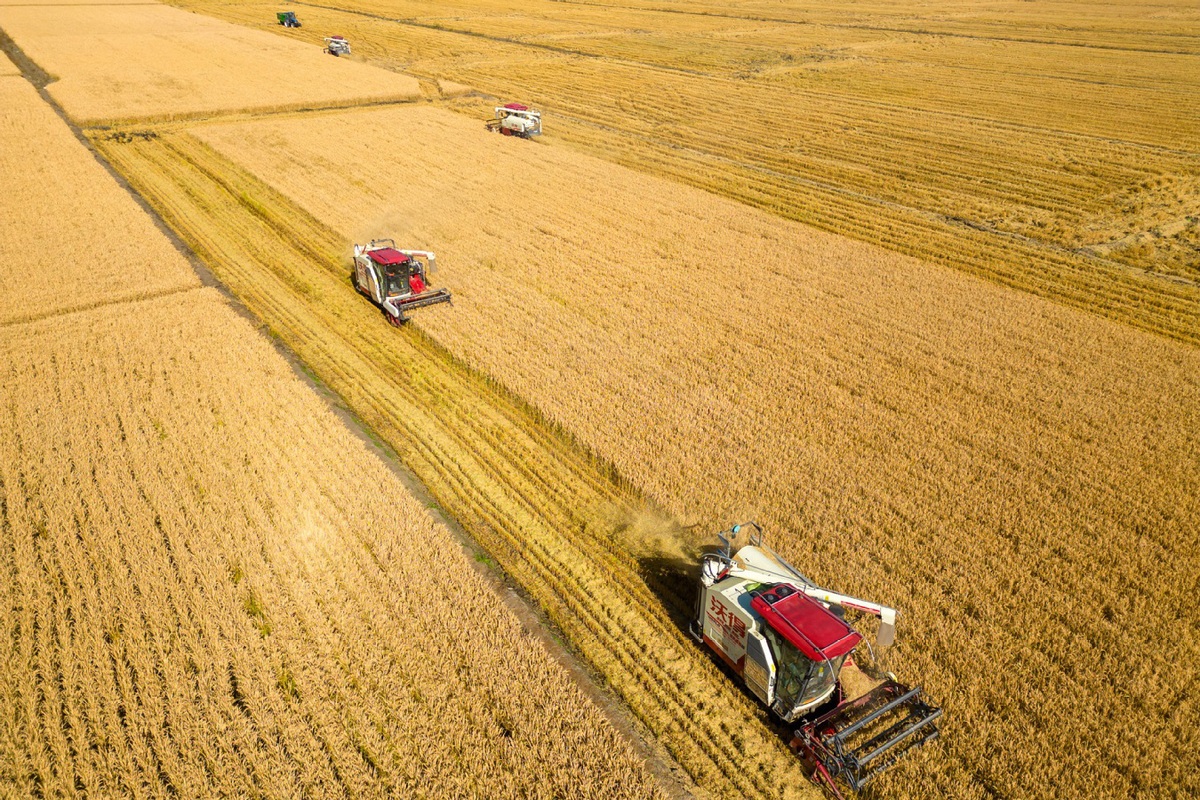China harvests thriving rural life with agricultural strides
Xinhua, December 18, 2024 Adjust font size:

BEIJING -- Agriculture, rural areas and farmers are among the top priorities for China's development. As 2024 draws to a close, China has secured another bumper harvest despite natural disasters, with substantial strides in improving the rural environment and well-being.
Here are some facts and figures showcasing the highlights of the country's agricultural and rural development throughout 2024.
-- China's 2024 grain output hit a record high of 706.5 million tonnes, an increase of 1.6 percent from the output last year. This year also marks the first time that the country registered a grain harvest of over 700 million tonnes.
-- The country's soybean production is estimated to exceed 20 million tonnes in 2024, while winter rapeseed output is expected to achieve annual growth for the eighth consecutive year.
-- In the January-September period, livestock meat production increased by 1 percent year on year, while aquaculture production expanded by 4.5 percent. More quality farm produce is now available to consumers.
-- Chinese lawmakers have adopted a law to promote the development of rural collective economic organizations and safeguard the interests of farmers. Effective from May 1, 2025, the law aims to encourage rural areas to explore approaches tailored to local conditions to develop the new rural collective economy, thereby, helping farmers increase their income.
-- In the January-September period, per capita disposable income of the country's rural residents reached 16,740 yuan (about $2,329), marking a 6.3 percent increase from a year earlier.
-- All 832 previously impoverished counties have developed unique leading industries with major advantages and potential. These industries include farm produce processing, rural tourism and leisure agriculture, helping create new growth drivers and improve living standards.
-- Currently, approximately 75 percent of rural areas nationwide have access to sanitary toilets, and solid waste is properly collected, transferred and handled in over 90 percent of villages across the country.
-- Over 45 percent of rural domestic sewage is now treated and controlled, contributing to a noticeable improvement in the rural environment.
-- Thanks to rural infrastructure development, paved roads are more prevalent in rural areas now, and over 90 percent of villages nationwide have access to 5G internet. Basic public services, including education, healthcare and elderly care, have also continuously improved.